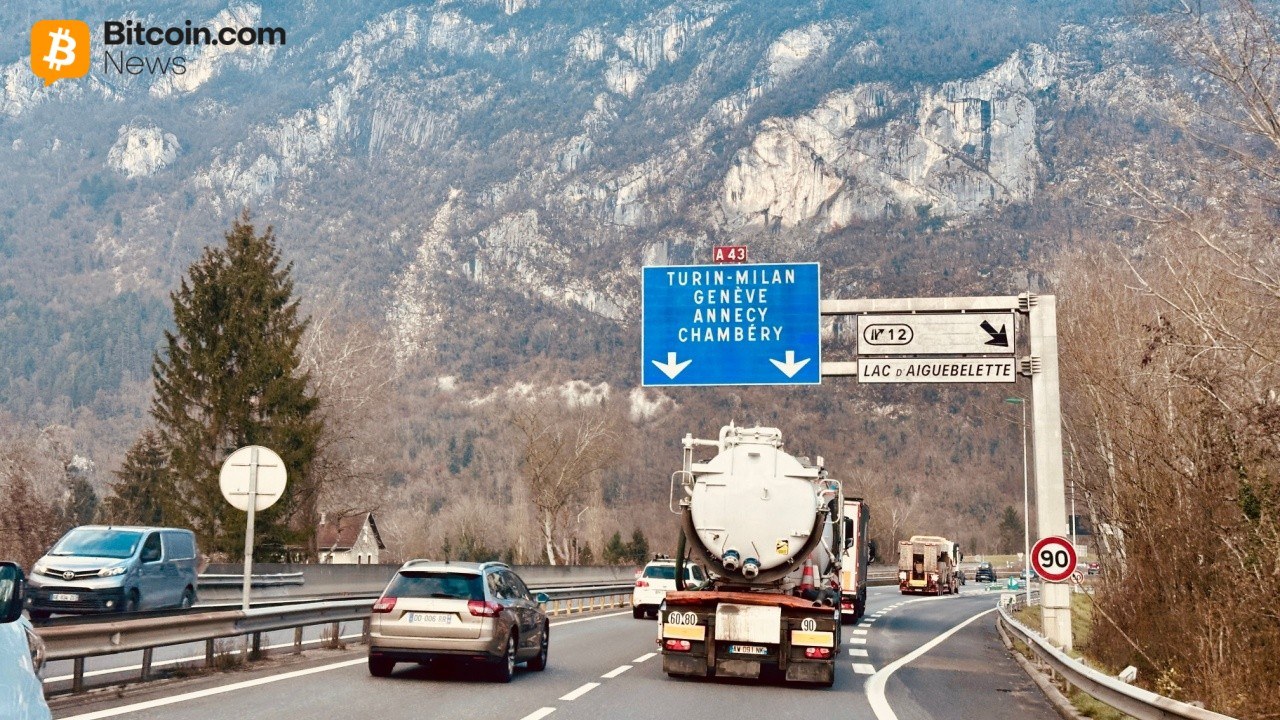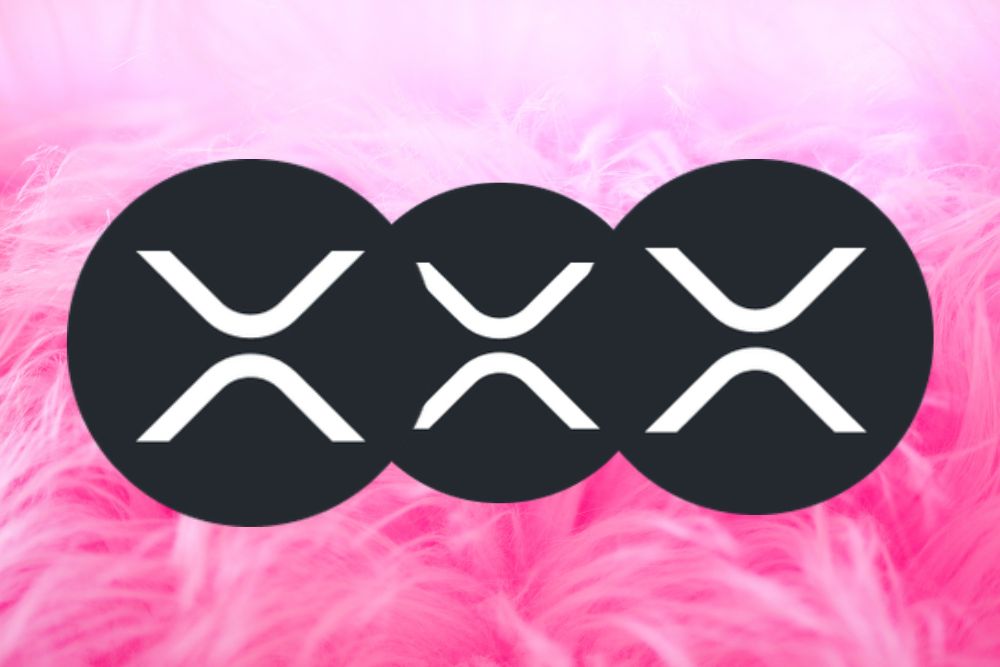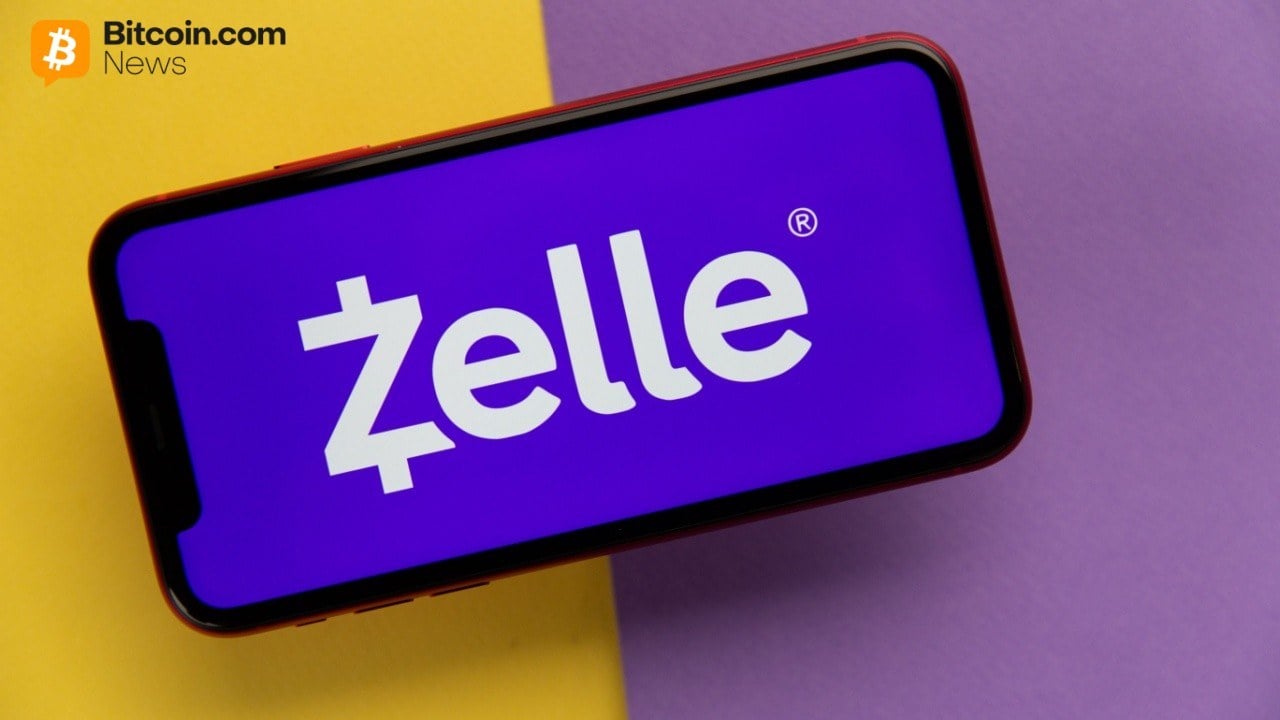
JPMorgan permits Bitcoin and Ethereum as loan collateral for institutional clients. Spot Bitcoin ETFs witness significant inflows as market sentiment improves. Continue Reading: JPMorgan Embraces Bitcoin and Ethereum for Loans The post JPMorgan Embraces Bitcoin and Ethereum for Loans appeared first on COINTURK NEWS .
CoinTurk News
You can visit the page to read the article.
Source: CoinTurk News
Disclaimer: The opinion expressed here is not investment advice – it is provided for informational purposes only. It does not necessarily reflect the opinion of BitMaden. Every investment and all trading involves risk, so you should always perform your own research prior to making decisions. We do not recommend investing money you cannot afford to lose.
Revolutionary Tokenized Stocks: StableStock Unleashes $10M in Digital Assets

BitcoinWorld Revolutionary Tokenized Stocks: StableStock Unleashes $10M in Digital Assets The world of digital finance is buzzing with innovation, and a new player, StableStock, is making waves with its groundbreaking approach to traditional assets. Imagine owning a piece of your favorite company, like Apple or Amazon, not just as a traditional share, but as a digital asset that can be used within the decentralized finance (DeFi) ecosystem. This is precisely what StableStock is enabling with its recent announcement: a monumental listing of $10 million in tokenized stocks , including shares from the esteemed Magnificent Seven (M7) companies. This move marks a significant step forward in bridging conventional markets with the dynamic world of crypto. What Exactly Are Tokenized Stocks and How Do They Function? Many investors are curious about how traditional company shares can exist on a blockchain. StableStock’s model is designed for transparency and security. Their tokenized stocks are unique digital assets that represent real-world shares. Crucially, each tokenized stock is backed on a strict one-to-one basis by the underlying traditional share. This means for every digital token, there’s an actual share held in custody, providing a clear link between the digital and physical worlds. Direct Backing: Every tokenized share is directly correlated to a real stock. Unique Tickers: To distinguish them, StableStock’s tokenized shares carry an ‘s’ prefix on their traditional tickers (e.g., sAAPL for Apple, sAMZN for Amazon). DeFi Integration: This innovative structure allows these digital assets to be seamlessly utilized within various decentralized finance applications, opening up new avenues for utility and yield generation. StableStock’s Ambitious Vision: Expanding the Horizon for Digital Assets StableStock isn’t stopping at just listing tokenized stocks . The platform has an ambitious roadmap aimed at further integrating traditional assets into the digital economy. Their upcoming initiatives promise to unlock even more potential for these digital assets, offering users diverse ways to interact with their investments. By November, StableStock plans to launch StableVault , a dedicated yield-generation platform. This new service will allow holders of tokenized stocks to potentially earn returns on their digital assets, similar to how traditional DeFi protocols offer yield on cryptocurrencies. This could be a game-changer for investors looking to maximize the utility of their holdings. Looking further ahead, the company intends to develop stablecoins that will be collateralized by its tokenized shares. This move could introduce a new class of stablecoins, backed by tangible assets rather than just fiat currency or other cryptocurrencies. Additionally, StableStock aims to develop perpetual futures and options products based on these tokenized shares, providing sophisticated trading instruments to a broader audience. Why Are Tokenized Stocks a Game-Changer for Investors? The rise of tokenized assets brings several compelling advantages for investors, transforming how they can access and manage traditional market exposures. These benefits extend beyond just digital representation, offering practical improvements over conventional investment methods. Fractional Ownership: Tokenization allows investors to own fractions of high-value shares, making investments more accessible. Enhanced Liquidity: With 24/7 trading possibilities in the DeFi space, tokenized assets can offer greater liquidity compared to traditional market hours. New Yield Opportunities: Platforms like StableVault will enable holders to earn passive income on their stock holdings through lending or other DeFi protocols. Global Accessibility: Breaking down geographical barriers, tokenized stocks can be accessed by investors worldwide, regardless of their location. Behind the Scenes: StableStock’s Growth and Strategic Funding The rapid advancements at StableStock are supported by significant backing. The company recently secured a multi-million dollar seed investment, a clear indicator of investor confidence in its vision and technology. This funding will undoubtedly fuel its development roadmap and expansion efforts. Among the notable investors participating in this round was EZ Labs , a prominent name in the blockchain and Web3 ecosystem. Such strategic partnerships and investments are crucial for scaling innovative platforms like StableStock, ensuring they have the resources to bring their ambitious plans to fruition and continue pushing the boundaries of financial technology. In summary, StableStock’s listing of $10 million in tokenized stocks represents a pivotal moment in the convergence of traditional finance and decentralized technology. By offering a secure, transparent, and DeFi-integrated way to access shares of companies like the Magnificent Seven, StableStock is not just listing assets; it’s paving the way for a more inclusive, efficient, and innovative investment landscape. The future initiatives, from StableVault to asset-backed stablecoins, underscore a commitment to redefining how we interact with financial markets in the digital age. This is an exciting development for anyone keen on the evolution of finance. Frequently Asked Questions (FAQs) About Tokenized Stocks Here are some common questions about StableStock’s offerings and the broader concept of tokenized shares: What are the Magnificent Seven (M7) companies mentioned? The Magnificent Seven refers to a group of highly influential and large-cap technology companies that have significantly impacted the stock market. These typically include Apple , Microsoft , Amazon , Nvidia , Tesla , Alphabet (Google) , and Meta Platforms (Facebook) . StableStock’s platform now lists tokenized versions of these powerful stocks. How are StableStock’s tokenized stocks different from traditional shares? While backed 1:1 by traditional shares, StableStock’s tokenized stocks are digital assets on a blockchain. This allows for features like fractional ownership, 24/7 trading, and integration into the DeFi ecosystem for potential yield generation, which are generally not available with traditional shares. They also have an ‘s’ prefix on their tickers. What is StableVault, and when is it expected to launch? StableVault is StableStock’s upcoming yield-generation platform designed specifically for tokenized stocks. It will allow users to earn returns on their digital asset holdings. StableVault is planned for launch by November. Who are some of the investors behind StableStock? StableStock secured a multi-million dollar seed investment from several investors. A notable participant in this funding round was EZ Labs , a recognized entity in the blockchain and Web3 space, signaling strong industry confidence. Are there any risks associated with tokenized stocks? Like any investment, tokenized stocks carry risks. These can include market volatility, regulatory uncertainty in the evolving digital asset space, and the specific risks associated with the underlying traditional shares. Investors should conduct thorough due diligence and understand the risks involved. If you found this article insightful, consider sharing it with your network! Help us spread the word about the exciting advancements in tokenized stocks and the future of digital finance. Your shares help others discover these important developments. To learn more about the latest crypto market trends, explore our article on key developments shaping the digital asset space and institutional adoption. This post Revolutionary Tokenized Stocks: StableStock Unleashes $10M in Digital Assets first appeared on BitcoinWorld . CoinTurk News
![A fresh soft-fork concept billed as a “temporary” fix for non-monetary data on Bitcoin has ignited one of the sharpest developer rows since the blocksize wars, with critics decrying the move as censorship theater—and, more explosively, as an attempt to force changes under the specter of legal liability. The proposal —submitted on Oct. 24, 2025, to the Bitcoin Improvement Proposals (BIPs) repository as “Reduced Data Temporary Softfork”—seeks to “temporarily limit arbitrary data at the consensus level.” Authored by contributor “dathonohm,” it explicitly cites an earlier mailing-list idea from longtime developer Luke Dashjr and frames the effort as a short-run measure while longer-term designs are pursued. The pull request was labeled “New BIP,” with discussion organized around two activation paths described as “proactive” and “reactive.” Although many in the debate refer to the document as “BIP-444,” the draft in the repository has not been assigned a number and still appears as “bip-????.mediawiki.” Even so, the conversation quickly escaped the confines of GitHub and the dev mailing list, morphing into a full-blown culture clash on X. An ‘Attack On Bitcoin’? At the core is a claim familiar from the inscription/Ordinals fights of 2023–2024: Bitcoin is “a monetary network,” not “an arbitrary data transfer protocol.” Supporters argue that constraining arbitrary payloads is about protocol purpose, not adjudicating content. In the draft’s discussion, the author stresses that limiting data avoids turning Bitcoin into “a content moderation system,” and contends that permissive data storage risks centralization and stigma if the chain becomes known as a venue for illegal material. “Node operators shouldn’t have to defend hosting arbitrary data just to participate in a monetary network,” one passage reads. The draft also floats a one-year horizon by anchoring the rules to a specific block height. In the PR discussion, a reviewer asked why the document blocks at “987424,” noting that if the intent is “to have it be a year out,” the magic number should be explained in an FAQ because height would drift during debate. The author replied to “see the deployment section,” underscoring that the change is designed to expire. What the change actually does is still being refined in the thread, but the direction is clear: clamp down on overt channels for large data blobs—explicitly OP_RETURN—and close obvious hiding spots in tapscript. One reviewer challenged the scope, noting that if the point were merely OP_RETURN, the draft would not also touch “MAST and OP_IF,” revealing that the specification aims beyond legacy datacarriers to curtail more expressive script paths that can be abused for storage. That breadth—combined with the document’s rhetoric—sparked immediate blowback. “Luke is being very clear that he expects his soft-fork to get adopted due to legal threats ,” said cryptographer Peter Todd. He also amplified a separate line of attack: that the change could perversely create a censorship-based double-spend vector. “BIP-444 creates a ‘C-SCAM’ attack where you use censoring reorgs to double spend,” Todd wrote, echoing BitMEX Research’s warning that a malicious actor could embed illegal content on-chain “to cause a re-org and succeed with their attack,” thereby creating “an economic incentive for onchain CSAM.” Galaxy’s head of research Alex Thorn weighed in even more bluntly: “this is explicitly an attack on bitcoin… however it’s also incredibly stupid.” Long-time Bitcoin developer Matt Corallo summarized the cultural dissonance with acid irony: “Bitcoin devs: ‘we have to be really careful…’ This BIP: ‘YOLO’.” Bitcoin devs: “we have to be really careful when designing forks to ensure there is never even remotely any risk that funds are effectively seized by fork activation. That would set a terrible precedent and risk Bitcoin’s longevity” This BIP: “YOLO” https://t.co/52nc0BlcPR — Matt Corallo (@TheBlueMatt) October 27, 2025 Todd also claimed to have demonstrated the futility of the approach. “Done with a decade old script that doesn’t even use segwit, let alone taproot… 100% standard and fully compatible with [Luke Dashjr’s] BIP-444,” he wrote alongside a transaction said to contain the entire text of the proposed BIP. Done with a decade old script that doesn’t even use segwit, let alone taproot. 100% standard and fully compatible with @LukeDashjr ‘s BIP-444. https://t.co/Ab7t82KYrk — Peter Todd (@peterktodd) October 26, 2025 The episode underscores a technical reality the draft itself acknowledges: there will “always be ways to hide data,” which is precisely why the author frames the goal as raising costs, eliminating overt lanes, and—crucially—signaling that large unencrypted files are not a supported use case, thereby “minimizing legal liability for users who run nodes.” If adopted, the proposal would have immediate implications for protocols that piggyback on witness/script space for non-monetary payloads— Ordinals-style inscriptions foremost among them—at least for the lifetime of the temporary fork. Critics counter that treating such activity as “abuse” is a normative move masquerading as neutrality, and that activating even a temporary fork which can strand funds or encourage censoring reorgs destroys a hard-won norm: forks must never set a precedent where funds can be effectively seized or transactions retroactively delegitimized. At press time, BTC traded at $115,743.](/image/68ff255d25adb.jpg)
Bitcoin Developers Clash Over Soft Fork Proposal To Combat ‘Spam’
A fresh soft-fork concept billed as a “temporary” fix for non-monetary data on Bitcoin has ignited one of the sharpest developer rows since the blocksize wars, with critics decrying the move as censorship theater—and, more explosively, as an attempt to force changes under the specter of legal liability. The proposal —submitted on Oct. 24, 2025, to the Bitcoin Improvement Proposals (BIPs) repository as “Reduced Data Temporary Softfork”—seeks to “temporarily limit arbitrary data at the consensus level.” Authored by contributor “dathonohm,” it explicitly cites an earlier mailing-list idea from longtime developer Luke Dashjr and frames the effort as a short-run measure while longer-term designs are pursued. The pull request was labeled “New BIP,” with discussion organized around two activation paths described as “proactive” and “reactive.” Although many in the debate refer to the document as “BIP-444,” the draft in the repository has not been assigned a number and still appears as “bip-????.mediawiki.” Even so, the conversation quickly escaped the confines of GitHub and the dev mailing list, morphing into a full-blown culture clash on X. An ‘Attack On Bitcoin’? At the core is a claim familiar from the inscription/Ordinals fights of 2023–2024: Bitcoin is “a monetary network,” not “an arbitrary data transfer protocol.” Supporters argue that constraining arbitrary payloads is about protocol purpose, not adjudicating content. In the draft’s discussion, the author stresses that limiting data avoids turning Bitcoin into “a content moderation system,” and contends that permissive data storage risks centralization and stigma if the chain becomes known as a venue for illegal material. “Node operators shouldn’t have to defend hosting arbitrary data just to participate in a monetary network,” one passage reads. The draft also floats a one-year horizon by anchoring the rules to a specific block height. In the PR discussion, a reviewer asked why the document blocks at “987424,” noting that if the intent is “to have it be a year out,” the magic number should be explained in an FAQ because height would drift during debate. The author replied to “see the deployment section,” underscoring that the change is designed to expire. What the change actually does is still being refined in the thread, but the direction is clear: clamp down on overt channels for large data blobs—explicitly OP_RETURN—and close obvious hiding spots in tapscript. One reviewer challenged the scope, noting that if the point were merely OP_RETURN, the draft would not also touch “MAST and OP_IF,” revealing that the specification aims beyond legacy datacarriers to curtail more expressive script paths that can be abused for storage. That breadth—combined with the document’s rhetoric—sparked immediate blowback. “Luke is being very clear that he expects his soft-fork to get adopted due to legal threats ,” said cryptographer Peter Todd. He also amplified a separate line of attack: that the change could perversely create a censorship-based double-spend vector. “BIP-444 creates a ‘C-SCAM’ attack where you use censoring reorgs to double spend,” Todd wrote, echoing BitMEX Research’s warning that a malicious actor could embed illegal content on-chain “to cause a re-org and succeed with their attack,” thereby creating “an economic incentive for onchain CSAM.” Galaxy’s head of research Alex Thorn weighed in even more bluntly: “this is explicitly an attack on bitcoin… however it’s also incredibly stupid.” Long-time Bitcoin developer Matt Corallo summarized the cultural dissonance with acid irony: “Bitcoin devs: ‘we have to be really careful…’ This BIP: ‘YOLO’.” Bitcoin devs: “we have to be really careful when designing forks to ensure there is never even remotely any risk that funds are effectively seized by fork activation. That would set a terrible precedent and risk Bitcoin’s longevity” This BIP: “YOLO” https://t.co/52nc0BlcPR — Matt Corallo (@TheBlueMatt) October 27, 2025 Todd also claimed to have demonstrated the futility of the approach. “Done with a decade old script that doesn’t even use segwit, let alone taproot… 100% standard and fully compatible with [Luke Dashjr’s] BIP-444,” he wrote alongside a transaction said to contain the entire text of the proposed BIP. Done with a decade old script that doesn’t even use segwit, let alone taproot. 100% standard and fully compatible with @LukeDashjr ‘s BIP-444. https://t.co/Ab7t82KYrk — Peter Todd (@peterktodd) October 26, 2025 The episode underscores a technical reality the draft itself acknowledges: there will “always be ways to hide data,” which is precisely why the author frames the goal as raising costs, eliminating overt lanes, and—crucially—signaling that large unencrypted files are not a supported use case, thereby “minimizing legal liability for users who run nodes.” If adopted, the proposal would have immediate implications for protocols that piggyback on witness/script space for non-monetary payloads— Ordinals-style inscriptions foremost among them—at least for the lifetime of the temporary fork. Critics counter that treating such activity as “abuse” is a normative move masquerading as neutrality, and that activating even a temporary fork which can strand funds or encourage censoring reorgs destroys a hard-won norm: forks must never set a precedent where funds can be effectively seized or transactions retroactively delegitimized. At press time, BTC traded at $115,743. CoinTurk News











